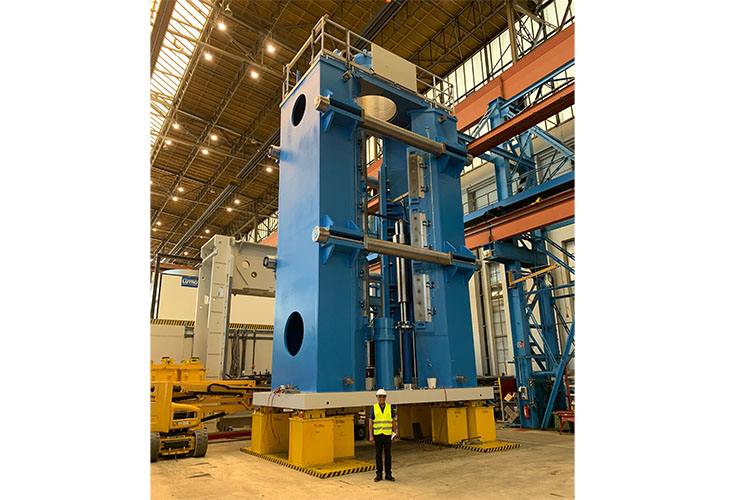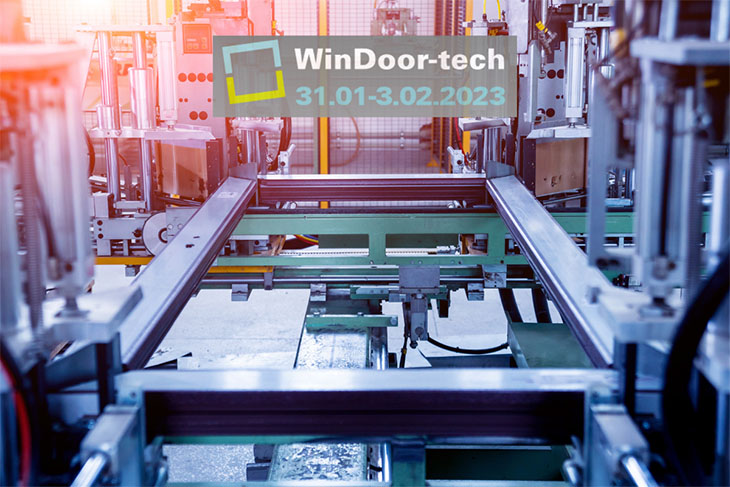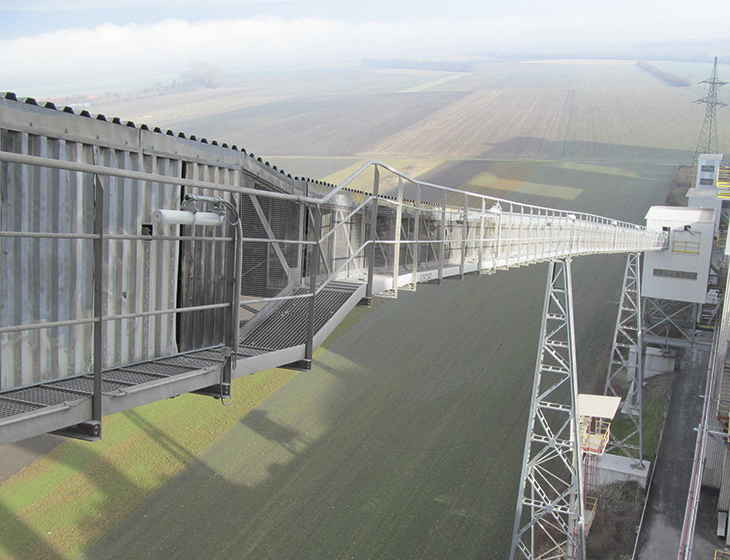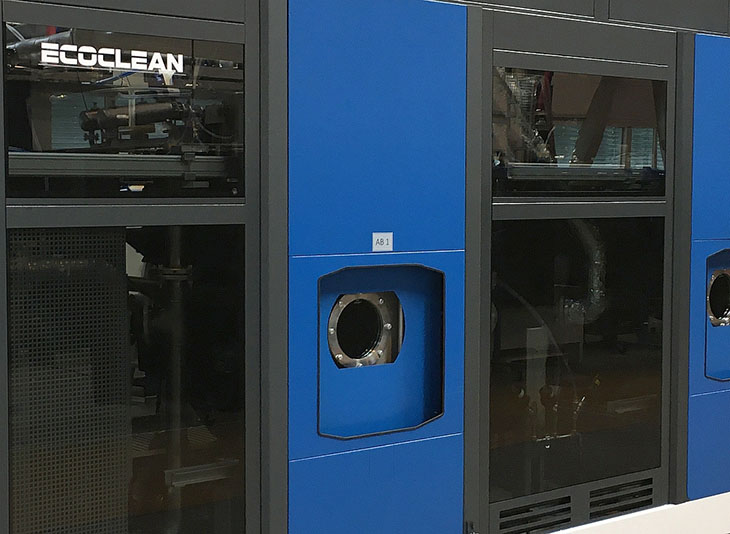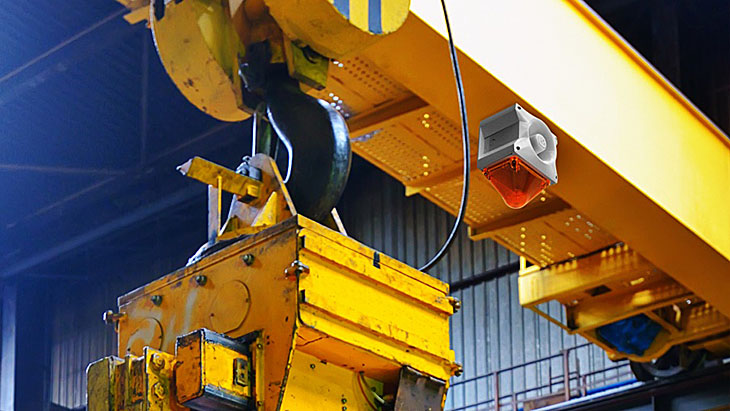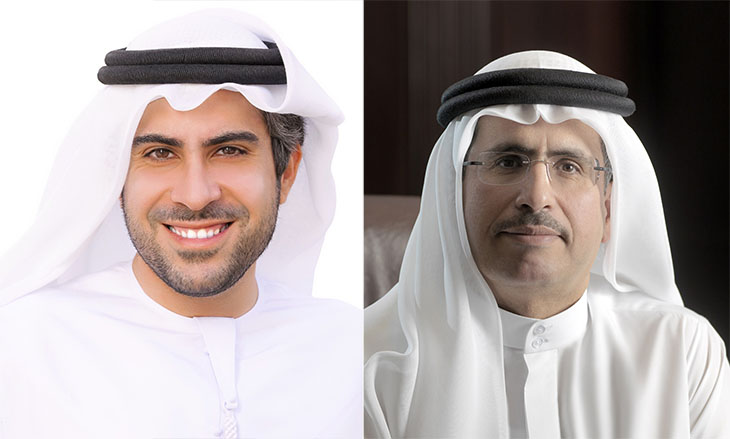Feinwerktechnik hago GmbH has been using Schuler's DigiSim software to simulate the flow of parts for two years – with success
Göppingen/Küssaberg, August 31, 2021 – In 2006, the company Feinwerktechnik hago GmbH took the plunge and invested in a 1250-ton transfer press from Müller Weingarten. Schuler acquired this press manufacturer a year later and has been delivering many further systems to hago since then. In March 2019, to all this hardware, the software “DigiSim” has been added which can be used to simulate and optimize the flow of parts in the machine. This not only increases the production rate, but also the availability and service life of the presses and dies.
“We have been a supplier to the automotive industry for more than 50 years now,” explains Dierk Knoblauch, who has been working at hago for more than three decades. When he started, the largest forming system had a press force of just 160 tons. Today, the authorized signatory heads the Equipment Manufacturing department, which includes die making – “from order receipt right through to series production”, as he himself says. The dies are used to produce complex structural parts for renowned automotive manufacturers and their suppliers: “It's a pity, actually, that you seldom get to see them in the vehicles,” Knoblauch laments.
Based on his twelve years of experience at hago, employee Patrice Domigall knows that computers are useful not only for die design, but also for simulating the flow of parts: “Once, we only noticed at the start of production that a guide pillar on a gripper was getting in the way.” Fortunately no collision occurred, but the stroke rate plummeted when the movement path was reprogrammed. The result: “We had high rework costs, and were no longer able to profitably produce the part.”
Press used to be tied up for half a day
The DigiSim software from Schuler would have recognized the so-called interfering contour immediately, knows the die designer: “Added to that, it noticeably speeds up the commissioning of new dies.” Previously, a press used to be tied up for at least half a day when programming the movement paths: “These days, its takes the machine operator about an hour of work after he receives the data sheet from us and has entered the values.” His task now is simply to execute all the movements once and check for possible collisions: “We have improved significantly in this area.”
His design colleague Matthias Vonderach, who like Patrice Domigall also underwent his training as a technical draftsman at hago and has now been there for over 20 years, still remembers well the time before DigiSim: “When the die space was not illuminated all that well, six people used to have to stand around the press and observe during commissioning.” As soon as the gripper and die got dangerously close to one another, one of them had to raise their hand: “Otherwise it would have gotten very expensive.”
The simulation with DigiSim already takes into consideration the safety distances: “The machine operator only needs to fine-tune things. Theoretically, he could also press the start button right away.” This applies also to the 630-ton servo press that hago operates at its Iuka location in Mississippi in the US, says Matthias Vonderach: “We simply send over the data sheet.”
The last two strokes are a decisive factor
The department manager Dierk Knoblauch would like to also use DigiSim more often in future when preparing quotes: “The last two strokes compared to our competitors is a decisive factor as to whether or not we win an order.” But it is also possible sometimes to make a miscalculation when preparing a quote – with serious consequences: “Anyone who sells twelve strokes per minute and actually can’t manage more than ten has to live with the consequences.”
Over the past three years, hago has also been optimizing a large proportion of its existing dies. “We quite deliberately set about further improving their performance,” explains designer Matthias Vonderach. “The advantage of DigiSim is that I can check the potential for optimization in advance. From this I can get a good idea as whether it is worthwhile investing the money.”
Best to use it right away during design
Patrice Domigall gives an example where the production costs were successfully reduced in just a few hours thanks to the software: “Without having to do very much, we succeeded in increasing the stroke rate by three strokes.” The production rate was further increased with a few smaller measures, like the use of magnets for a smoother depositing of the parts. It is best, however, to design the die from the ground up with the help of DigiSim: “Rework is always expensive, laborious and time-consuming.”
DigiSim also markedly increases safety when running in new dies, underscores Matthias Vonderach: “We approach it with a much better feeling.” Because the die costs a lot of money, there’s always a bit of nervousness involved as well: “But with DigiSim, I know that the press will run even if space is at premium. That is immensely reassuring.” And that takes the pressure off the machine operator, who would otherwise have to program the press in a loud environment and often under time pressure. “Safety comes before everything else after all,” says Dierk Knoblauch. “Even if a crash only occurs once in every ten dies, that’s already one too many.”
Fully automatic optimization in the works
The system does however have its limits, adds Matthias Vonderach: “The reality sometimes looks different when working with steel and iron.” Factors such as the inertia and vibrations of parts – which can be quite evident even at smaller dimensions – are not currently taken into consideration in the software. Schuler is presently further developing DigiSim with the aim of automating the individual optimization steps.
The experience of the designer also plays a role when it comes to choosing which gripper suits which part better. “A chain is only as strong as its weakest link”, points out Dierk Knoblauch. It is often also crucial to get the material into the first forming stage well. A slight stamping of the blanks can reduce vibrations: “No system can show you this, though, as it requires the practical experience of the designer.”
Harmonic and soft transitions
“We are trying to get the most out of the theory,” describes Matthias Vonderach his work. “The machine operator enters the values and then gradually increases the stroke rate. Even if, for example, he only reaches 20 instead of 25 strokes, the movement paths run more smoothly in my experience than if he had programmed them manually,” adds Patrice Domigall. The software automatically calculates more harmonic and soft transitions, says Dierk Knoblauch delightedly: “You can really notice it when you stand it front of it.”
“That is not only gentler on the machine, but also saves energy,” says Matthias Vonderach listing further advantages. “Constant accelerating and braking consumes a lot of energy.” All three persons have therefore come to a positive conclusion overall about DigiSim after two years of experience with it: “It’s simply a professional way of operating a transfer press,” summarizes Patrice Domigall.


















